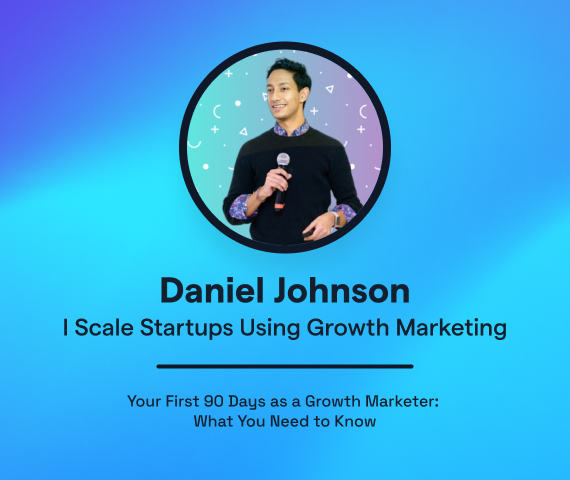How to Build a Growth Team
Generalists vs Specialists, Prioritization & Experimentation, Team Leadership and External Partners. Here is a guide about building growth teams at startups!
ABCs of a growth function for startups
Let’s begin with the context of startups because:
- It’s much easier to grasp the concept
- One can relate/understand ‘growth function’ and its evolution as the startup grows
More often than not a startup begins with just one person, maybe two.
Because not many startups have enough funding to be able to hire a full-fledged growth team or even a dedicated growth person.
In such a scenario, it’s in the best interest of the founders to have as much clarity as possible with regards to the growth as a focused effort.
Product vs Service
Growth function for a product startup is definitely going to be different than that of service.
Why?
A product generates a lot of data points which necessitates a lot more analyses and gleaning out insights at every stage of the growth journey.
Whereas for a service-based startup, it’s going to be different. Growth function, in this case, will be all about lead generation and sales management.
Generalist vs Specialist
At the early stages, you don’t know what channel or tactic works. Therefore, the idea of a growth team would be definitely someone who’s capable of being a generalist.
Because if you are alone in this, you have to wear multiple hats; be able to make sense of data, fix the tracking, evaluate PPC channels, optimise conversions, talk to influencers and even do some creatives.
Hence, if you are looking for a dedicated growth person right from the beginning then that would be someone who’s capable of either overseeing these done by freelancers or do it by himself/herself and be able to find a focus.
The key thing to do at this stage is to build the customer persona or at least some hypotheses in this regard.
Then comes the list of tests or ‘the growth experiments’ to validate what works for your product and what doesn’t.
Fail fast, move on faster
Your learning curve will be steep if you keep good track of the data from your early experiments.
The key here is to perform tests, quickly eliminate failures, validate or discard hypotheses, move forward and keep finding the winning tests.
So at the core of it is learning. And having a robust experimentation process in place.
The outcome would be telling good from the bad and uglies; which of the experiments have had the most impact, which ones are cost-effective, which ones suck, which ones produce exponential results, etc.
Prioritise, prioritise and prioritise

With so many moving parts it’s easy to get trapped and feel overwhelmed. One simple tactic to maintain focus and ensure you are on the correct path is to have a growth tracker.
For example, have a document (tracker) where you list your tests and tasks for the week, a week after and the month. Also, clearly state hypotheses behind these and yardsticks to measure outcomes.
Having some sort of assistance behind your prioritization. Is incredibly important, especially in the earliest stages.
Scaling up
The key element in scaling up is basically being able to tell with a strong conviction where you are going to focus next and what have you validated so far.
For example, is it going to be Facebook ads or is going to be influencers? Is it going to be SEO or content that you want to double down on?
The case for hiring specialists

Because you’ve already seen and analysed the experiment results you know which channels will deliver a higher return on marketing investment than others.
Now it is just the apt time to hire a specialist who’s going to work on replicating success on those identified channels. Or, perhaps, consult a growth expert before hiring a specialist.
This position is going to be overseen by whoever’s in charge of marketing. It might be the co-founder, head of marketing, growth lead or even a CEO.
This specialist will be the first micro marketing hire that eventually becomes the lead and start building the specialist teams.
When you will need a team lead?
In the beginning, it’s probably going to be a couple of people, so it’s going to be easy to manage them.
But once the team grows, you probably should think of the second layer of management because as one person, you’re very unlikely to be able to manage more than five people directly.

This day-to-day line manager or team lead is not only going to make your life easier but also helps focus and double down the specialization.
And, this aspect is the most important one because that’s where you will be able to replicate success exponentially.
This is possible only knowing what is working for you which in turn is a result of trying many different things at the early stage to figure out what is helping build traction. And then, it’s just a matter of conducting statistically relevant tests. In the early stage, it’s going to be very difficult for anyone to get statistically relevant data. So it’s very often going to be some guesstimation.
Key takeaway: Don’t dive into specialization until you have validated your hypotheses with statistically significant data.
The classic chicken or egg problem: Who should you hire first? A specialist or a growth lead?
There are two ways to tackle this. Either hire a specialist who has the potential to become a lead later on, or hire a lead right at the beginning to be able to put in place the right framework, systems and processes.
If sufficient funds are available then it’s highly recommended that you hire a full-time growth resource first. Because, in such a scenario, you’ll likely have a well thought out framework, tracking mechanisms and the entire structure ready before hiring a specialist.
Cross-functional requirements as your product scale further
The extent of cross-functional requirements depends on how much data you are gathering, how many growth experiments you are conducting and how complex are those experiments.
Let’s consider a hypothetical example.
Your product has scaled up to 1000s of users and you are tracking data at 15 different touchpoints.
In such a scenario, you will need somebody who’s going to be focused only on analyzing data, doing reports and providing insights from the data.
You now want to act upon these insights with tweaks and adjustments – small and big – to your frontend, workflow and backend.
You will probably need dedicated developers and programmers to carry out these ‘big’ or ‘major’ redesigns, tweaks or adjustments.
And, on top of all, you will probably need somebody who oversees these tasks, because this is going to be a project in itself. You might even require a software tool to manage this project.
Therefore, to achieve the desired growth pace and dedicate cross-functional resources efficiently to manage this growth, you ought to:
- Have a master-dashboard of sorts where all important trackers are in one place.
- Have somebody have a grasp at all of this, be able to move things forward instead of some items being forgotten and left in limbo.
Role of an agency
Agencies are like your extended, on-demand growth teams. There are generalists, specialists and a mix of both. They have the ability to quickly validate hypotheses, perform tests, deliver results and scale as much as and as and when needed.
Most of them are really good at it because they do it day in and day out, over and over again. Here is GrowthMentor’s list of best growth marketing agencies.
Engagement models
Fully or partially outsourced
You have a core growth team that coordinates with the agency.
In this model, the agency deploys dedicated or shared resources to plan and execute all or part of your growth marketing tasks.
They test & validate channels, setup & manage campaigns, scale up or down as per your growth needs while proactively recommending new experiments.
As a consulting partner
You have a full-fledged growth team and the agency fills in some of the knowledge and resource gaps that you might have.
In this model, agencies are go-to guys to quickly test and validate what works and what doesn’t. Then move the function within and scale up by setting up new resources/teams, frameworks and processes internally.
Some quick tips for sourcing and hiring for growth roles
Growth marketing is simple but not simplistic. It involves multiple functions and is ever changing, very rapidly at that!
Hence, it’s important that the potential candidates (1) are hungry for knowledge to keep up with this rapidly evolving space (2) have high potential to develop required skills along the way and (3) are good team players to seamlessly work at the intersection of multiple functions.
Interview questions
Following are a few sample interview questions that help uncover whether the candidates possess the traits discussed above:
- What are you reading currently?
- What is the last book you finished?
- How do you keep yourself updated with the latest happenings in marketing?
- What kind of course, just have you been doing in marketing?
- When was the last time you’ve been able to teach your coworkers something?
- When was the last time you’ve been able to learn something from a coworker?
- How did you feel about it?
Facebook ads
Facebook ads tend to work just fine, especially if you are hiring locally and for junior or specialist roles.
A simple and nice landing page explaining the job description, and a few questions or tasks to filter out non-serious/non-relevant candidates should do the trick.
Sometimes, this does work even when hiring for team lead roles. However, for further ups this source fails to attract the right profiles. That’s when a more personalised approach is needed, like a linkedin inmail.
LinkedIn Outreach
In early stages, a personal outreach on LinkedIn often does the trick to find the right people.
A freelancer can also help source the right candidates if they are given a clear and detailed brief.




